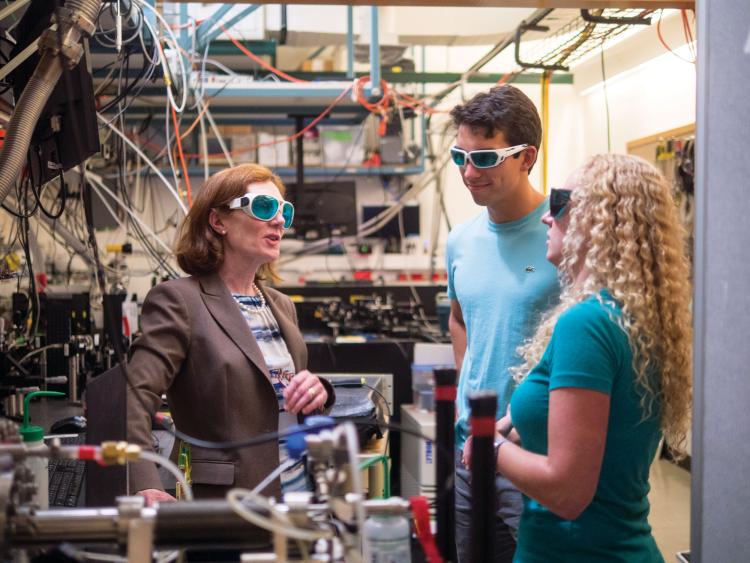STROBE imaging

How STROBE is modeling the future of research
From life-saving advances in medicine to life-changing opportunities in renewable energy, imaging technology offers a window into worlds that can’t otherwise be seen by the human eye. That makes it an essential tool across a broad range of scientific disciplines, from engineering to biosciences. But despite their widespread use, today’s imaging techniques remain limited. Finding a solution to this problem will require collaborating with other institutions and developing new ways to educate up and-coming scientists.
Based at CU Boulder, the Science and Technology Center on Real-Time Functional Imaging—known as STROBE—is designed to do exactly that. Officially formed in 2016 through a fiveyear, $24 million grant from the National Science Foundation, the center wants to transform imaging science while helping the next generation of scientists pioneer future innovations.
Margaret Murnane, a JILA fellow and Distinguished Professor of physics, serves as director and principal investigator for STROBE. For her, the question at the heart of the center’s mission is, “What type of microscope will researchers need 20 years from now?” It’s a question that can’t be answered in isolation, she says. “Depending on what systems you’re looking at, you need to integrate not only other imaging techniques, but also the insight of other disciplines.”

A transdisciplinary approach is built into the very structure of STROBE. The center connects physicists, mathematicians, chemists and biologists from the University of California, Los Angeles; the University of California, Berkeley; the University of California, Irvine; Fort Lewis College; and Florida International University, enabling them to share information and imaging capabilities with each other. The scientists at STROBE hope this alliance—and the new, unified imaging methods that come out of it—will transform the way research is performed at CU Boulder and beyond.
Equally important is the creation and maintenance of a strong, supportive community of graduates, in both industry and national laboratories, who can advise students and connect them with opportunities.
“We want to get students networked for life,” Murnane says. “Too often, graduates dive into STEM careers without mentors or sponsors, and without the communication skills and professional development they need to succeed.” To address this, STROBE is developing innovative educational programs designed to provide students with real-world experiences and the types of professional relationships that can help them throughout their careers.
Fifty percent of STROBE’s core faculty consists of women and people from underrepresented groups, putting the center in a strong position to provide the kind of accessible, diverse community that STEM fields frequently lack. By tracking the success of its programs, the STROBE team aims to create an educational model that can be used in future NSF Science and Technology Centers.
The future of imaging science, as with any field, hinges on more than just enhanced technology. It depends on the skill and expertise of the people trained to use it. By combining the strengths of multiple institutions to revolutionize imaging science and preparing a diverse group of students to be globally competitive in its use, STROBE serves as an example of a new type of research center: where cuttingedge methods are performed and taught with an eye to improving the quality of research everywhere, and where strengthening collaborative partnerships makes world-changing impact possible.
Principal investigator
Margaret Murnane
Funding
National Science Foundation (NSF)
Collaboration + support
Markus Raschke, Noah Finkelstein, Henry Kapteyn and Rafael Piestun; Physics; Electrical, Computer and Energy Engineering; JILA; UCLA; the University of California, Berkeley; Florida International University; the University of California, Irvine; and Fort Lewis College







